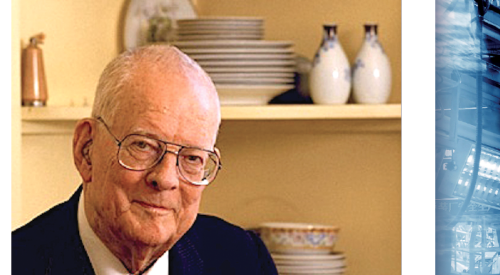John Gallagher is an old friend. He also president of Pulte’s Southwest Region, and he recently called me with an interesting question. He was preparing for a meeting and an agenda topic was the next wave in quality in the homebuilding industry, and where and who would lead it. What John asked specifically was, "If you were the president of a major national builder and you wanted to jump start the next quality wave, who would you hire?"
A challenging question for me. When I hired on as Pulte’s vice president of quality in 1989, it was a lonely job. To my knowledge, I was the only person with such a title in the industry. An "outsider", I had come from years of consulting and had cut my quality teeth at Motorola in the late seventies.
But the decade of the nineties was nothing like the seventies. The past ten years brought profound change in home building. We woke up, discovered the customer and realized we had a lot to learn from leaders like Deming, Juran, Feigenbaum, and Crosby. Change began to happen. Pretty soon there were people with similar titles to mine--Mark Hodges at Hovnanian, Jay Kopel at Centex and Diane Rivera at Shea. Even more importantly, leaders of home builders both large and small began to step up and speak out. While there are too many to mention, names like David Weekley, Paul Estridge, Jr. and Tom Gillespie come to mind. Perhaps those who have made the greatest difference of all have been the guys in the trenches, working with suppliers and trades to change the basic nature of how we do business. Guys like Gary Grant from Pulte Minneapolis, Doug Shipman from Sunrise Colony and Neville Alperstein from Del Webb.
So who will be next? Who would I hire today? Where is the next quality leader with vision and stamina right now? First, let’s think about the person. This individual would have to be relatively young, tough and aggressive--someone who has taken a business through the fire and learned a lot the hard way. Someone willing to take flack for debunking our current paradigms. A practical zealot would be a good general description.
For this kind of person I think I’d go to the single industry that has had to do the most work of all to turn around in this country--automotive.
Think I’m exaggerating? In 1980, Chrysler was bankrupt and Ford was there on paper. GM flirted with it on several occasions up to and including the early nineties. Tom Peters predicted that by 2000 there wouldn’t be any auto manufacturing left in the United States. The products built by the big three were poorly designed and shoddily built rust-buckets. (Okay, I’m being kind.) There was no regard for the customer. A trip to the dealer to buy or service a car was a chance to get a taste of Purgatory without actually dying.
So where are the automotive "walking dead" now? Taking back share from the foreign companies, wildly profitable and building products that on a price-value basis compete favorably with the once untouchable foreign brands. What has happened is nothing less than astounding and was predicted by no one.
So here’s what I told John. Hire a good headhunter and go deep into Ford, Chrysler or GM. Find someone about 40, with at least 15 years experience. A real "turk" who won’t take no for an answer. Someone who remembers how bad it used to be and fought through the changes. Give that person carte blanche in three specific areas--customer delight, partnering and manufacturing technology. A few quick words on each.
Customer Delight. Satisfying the customer is no longer enough. Every business in this country, from airlines to healthcare, screams quality and taking care of the customer. The problem is, home builders don’t do enough hard work and solid research to really understand customer needs and expectations. The J.D. Power surveys prove this. Our top tier of homebuilders’ scores pales compared to those in other industries.
We are not pushing anyone’s envelope. Take warranties as an example. Since 1980, automobile warranties have increased from 12,000 miles to 50,000 miles to even 100,000 miles in some cases. Getting that service is far less of a hassle than it used to be. As home builders, we think we’re generous with a one-year cosmetic, two year mechanical and 10 year structural warranty. And most of us still make buyers send us a letter to generate service.
Is that the best we can do? I am still continually amazed at the disdain for the customer I see smoldering just below the surface at all builders. Other industries have overcome it. Why can’t we?
Partnering. In this area, automotive has truly done an about face. The depth of partnering relationships that exist in the most progressive auto companies could not even have been conceptualized in 1980. Honda’s statistics tell the tale the best. Since 1978, Honda has manufactured automobiles in Marysville, Ohio. The company is acknowledged for world-class quality and low-cost production, perennially making Car & Driver’s "10 Best" list. In 20 years of operations, the number of suppliers Honda has had is 400. The number of ex-suppliers they have had is 12. Stunning.
This track record demonstrates a paradigm of communication, teamwork and proactive problem solving that most of us cannot imagine. But we will have to, if we are going to ever gain the full benefit, input, knowledge and skill of the people who build our homes--98% of whom never work for us directly. They hold the gold, but most of it goes unmined because we don’t have the relationships that give us access.
Manufacturing Technology. In this arena, we are true neophytes, and strong leadership and bold investment is required. We seem to be forever stuck on "pause" in so many of our efforts. Panelization and steel framing, for example, are two revolutions that have been on the verge of happening for 30 years.
Take a look at the radical changes in sub-assembly that have caused dramatic improvements in quality and productivity in auto assembly, and you’ll find only a fraction of a percent being applied in home building. Rudimentary SPC, (Statistical Process Control) routinely practiced by line workers at Ford, is still almost unheard of in our business. Commonplace manufacturing techniques such as FEMA (failure effects mode analysis) and smooth production flow (using the principles taught by Eli Goldratt) have yet to surface. I could go on, but the point is that the visionary leadership in the right company could have a field day with these techniques.
With this kind of a charge--and a five year guaranteed contract (!)--the right person might just set off the next great wave. Meanwhile, there is still enough work to do in the current wave to keep a few hundred quality geeks like myself busy. But truly, I look forward to the day when I hear someone say,
"That Sedam guy ... he’s part of the old school ... let me tell you who’s on the leading edge now."











